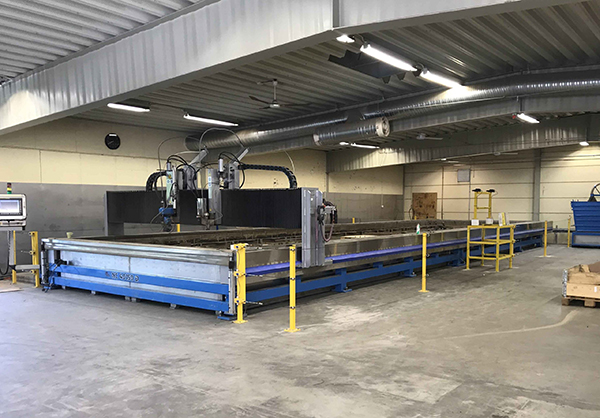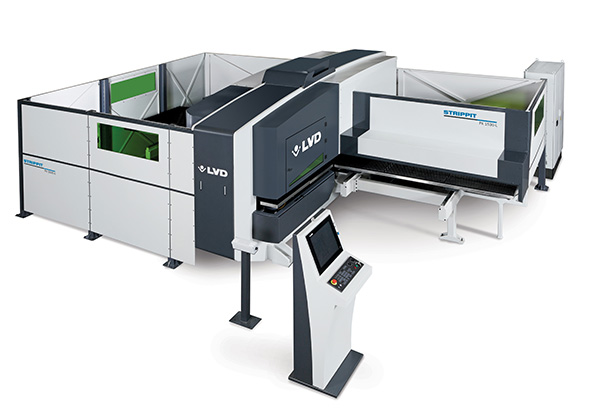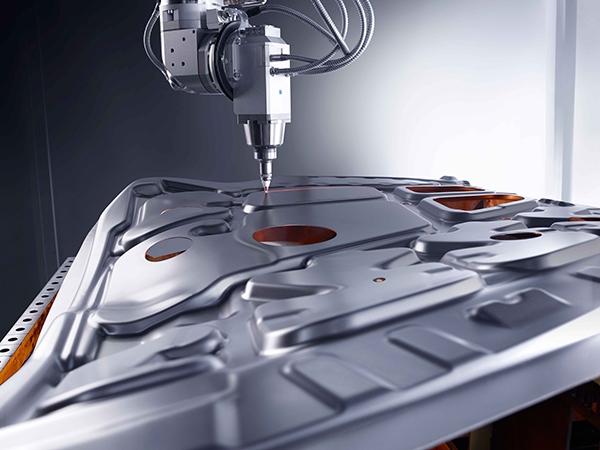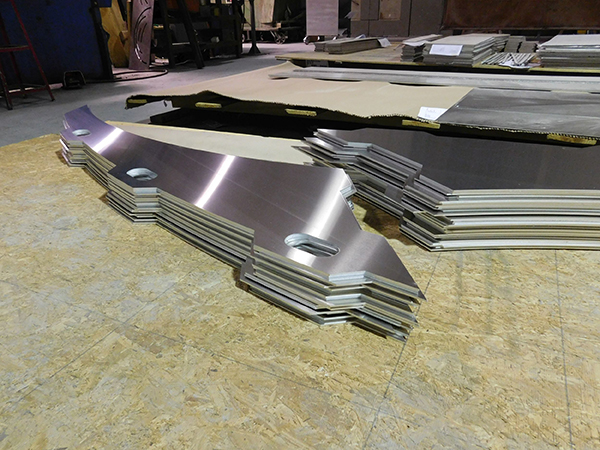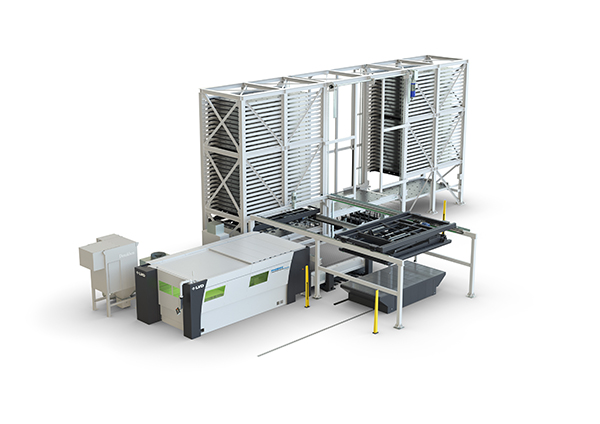
Ölands Vattenskärning AB, a waterjet cutting specialist in Scandinavia, has recently installed its largest machine to date. The machine, made by Water Jet Sweden, has a 4 x 15 m cutting area and is equipped with two cutting heads, one with 0-60°cutting capability.
Some time ago, Ölands Vattenskärning identified a need for a machine with a large cutting surface and the ability to cut in five axes. As luck would have it, another customer of Water Jet Sweden located nearby planned to close its operations. Since 2013 TBS Yard had been manufacturing large sandwich constructions for the shipping industry and, for this purpose, invested in a Grand machine from Water Jet Sweden. This powerful 4 x 15 m machine harnessed two cutting heads, including a five-axis Beveljet 60.
Serviced regularly, the Grand waterjet was in very good condition. Several companies were interested in buying the machine, but Ölands Vattenskärning eventually won the bidding.
The service team from Water Jet Sweden moved the machine to the new site. This turnkey service includes machine reconditioning, packaging, transportation and an operations guarantee, making sure that everything functions properly after installation.
“It’s common for customers to turn to us for this type of assignment because we offer the whole package and ensure that everything works,” explains Ronny Martinsson, head of customer service at Water Jet Sweden. “Moving a very large machine is complex when it comes to loading, unloading, arranging wide load transportation and so on. We took care of it all, arranged transport and carried out additional training on how to run the five-axis Beveljet 60 cutting head.”
As a contract cutter, Ölands Vattenskärning is now the only company in Scandinavia with the ability to offer a machining capacity of 60 sq m profiling surface with 0-60° cutting.
For further information
www.waterjetsweden.com






